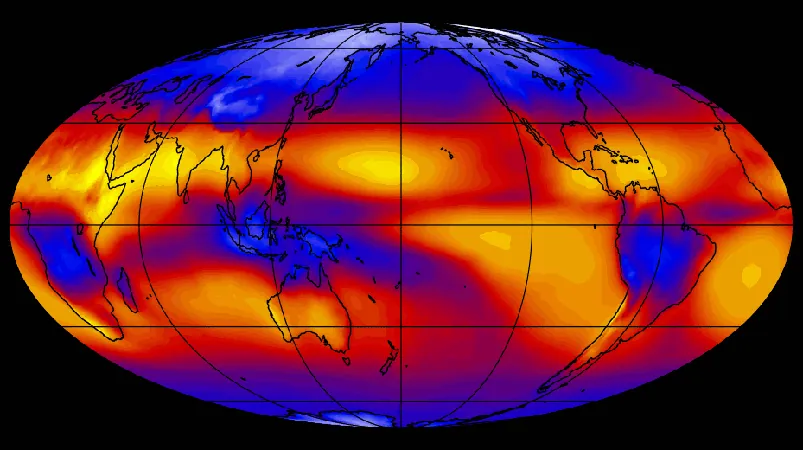
Revolutionary Discovery: Scientists Might Have Captured Visual Evidence of Cosmic Strings!
2025-04-30
Author: Liam
In a groundbreaking revelation, scientists may have stumbled upon the first visual evidence of cosmic strings, mysterious structures that could hold the key to understanding the universe's birth.
The Big Bang and Its Aftermath
The universe originated with an explosive event known as the Big Bang, a cataclysm so profound that it shaped the very fabric of space and time. Within fractions of a second, a tumultuous phase transition unfolded, akin to boiling water, but occurring at unimaginable temperatures.
What Are Cosmic Strings?
As the cosmos simmered, it’s theorized that this rapid evolution left behind cosmic strings—hypothetical, thread-like structures brimming with energy, stretching across unimaginable distances. First proposed in the 1970s by physicist Tom W. B. Kibble, these defects in spacetime could be akin to cracks in frozen water.
The Shift in Scientific Thought
For decades, cosmic strings were overshadowed by new data and inflationary models that explained the universe’s structure without needing them. However, lingering doubts remained, especially as scientists like Thibault Damour and Alexander Vilenkin reignited interest, suggesting that cosmic strings could release detectable bursts of gravitational waves.
Exciting New Findings!
Recently, researchers from the Indian Institute of Astrophysics sparked excitement with the announcement of several potential cosmic string candidates, notably in a region dubbed CSc-1. Their early findings, while awaiting peer review, have already caught the attention of the global physics community.
The focal point of their intriguing study involves two luminous galactic entities, SDSSJ110429.61+233150.3, initially thought to be two separate galaxies but proposed to actually be one, distorted into two by gravitational lensing. Surprisingly, researchers suspect that the real lensing agent might be a cosmic string!
Unraveling the Mystery
The team noted, "The significant correlation between the spectra of the two components hints at a gravitational lensing connection. Our simulations from the CSc-1 field suggest that many such pairs can indeed be explained through the geometry of a cosmic string."
While the hypothesis remains speculative, it carries weight in light of the remarkable similarities in the light spectra from both components, advocating for the cosmic string theory.
Looking Ahead
Cautiously optimistic, the researchers emphasize the need for further investigation, recommending an in-depth study of the CSc-1 region using powerful telescopes like the Devasthal Optical Telescope in Nainital, India.
A Cosmic Milestone
Though the evidence isn't yet conclusive, this research marks a thrilling milestone in understanding cosmic strings, opening pathways to probe the universe's most profound secrets. Will we finally unravel the true nature of these elusive structures? The quest to uncover the mysteries of the cosmos continues!









 Brasil (PT)
Brasil (PT)
 Canada (EN)
Canada (EN)
 Chile (ES)
Chile (ES)
 Česko (CS)
Česko (CS)
 대한민국 (KO)
대한민국 (KO)
 España (ES)
España (ES)
 France (FR)
France (FR)
 Hong Kong (EN)
Hong Kong (EN)
 Italia (IT)
Italia (IT)
 日本 (JA)
日本 (JA)
 Magyarország (HU)
Magyarország (HU)
 Norge (NO)
Norge (NO)
 Polska (PL)
Polska (PL)
 Schweiz (DE)
Schweiz (DE)
 Singapore (EN)
Singapore (EN)
 Sverige (SV)
Sverige (SV)
 Suomi (FI)
Suomi (FI)
 Türkiye (TR)
Türkiye (TR)
 الإمارات العربية المتحدة (AR)
الإمارات العربية المتحدة (AR)